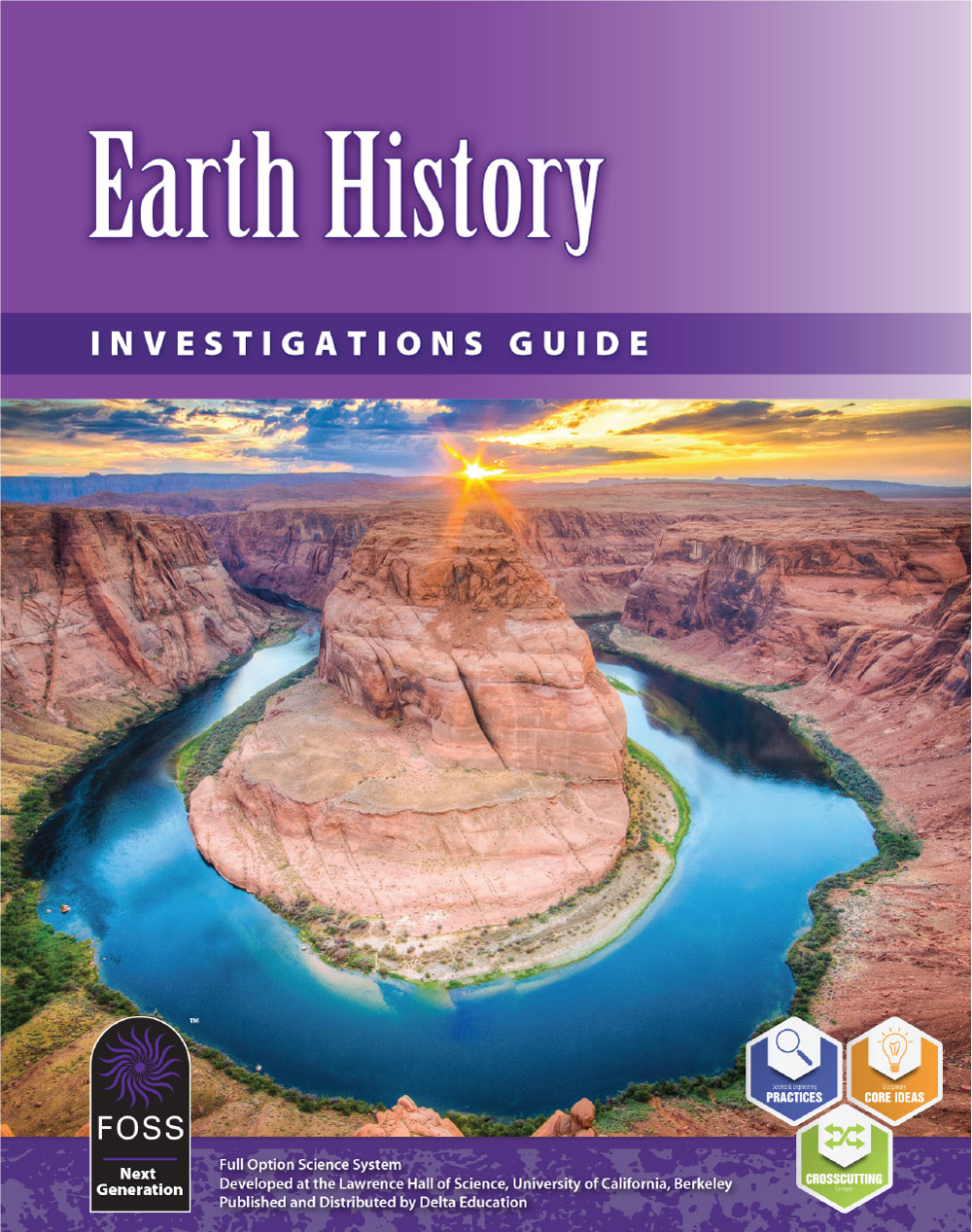FOSS Next Generation Earth History
Grades 7

In the Earth History Course, students read evidence from rock, landforms, and fossils to tell the geological story of a place. Students grapple with Earth’s processes and systems that have operated over geological time, coming to understand the rock cycle, human interactions with natural resources, and the technology that supports the geosciences. Through their study of Earth history, students will become more confident in their ability to ask good questions and to recognize and use evidence from the rocks to come up with explanations of past environments.
Investigation 1: Earth is Rock
Study the landforms and rocks that make up Earth’s crust.
Investigation 2: Weathering and Erosion
Discover what sediments are and explore how water can erode sediments and deposit them downstream.
Investigation 3: Deposition
Investigate the processes by which sediments turn into sedimentary rock.
Investigation 4: Fossils and Past Environments
Consider the time scale in which rocks and fossils form using data from the Grand Canyon.
Investigation 5: Igneous Rocks
Examine rock samples and investigate the relationship between crystal size and the formation of igneous rocks.
Investigation 6: Volcanoes and Earthquakes
Use convection and plate tectonics to explain plate boundary interactions and patterns of volcanoes and earthquakes.
Investigation 7: Mountains and Metamorphic Rocks
Work with different models of mountains and explore how interactions at plate boundaries produce mountains.
Investigation 8: Geoscenarios
Synthesize knowledge from the course, bringing critical insight into the story of a geological site.
Investigation 9: What Is Earth’s Story?
Apply knowledge of the rock cycle to answer the question, “What is the story of this place?”